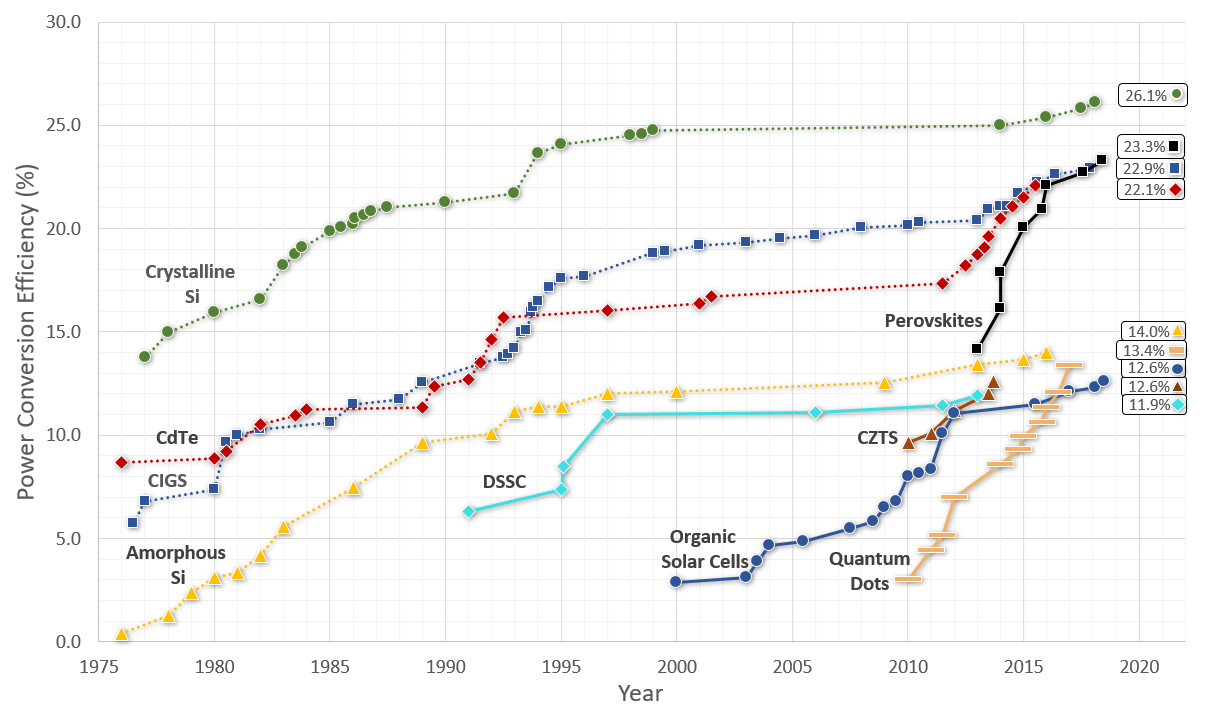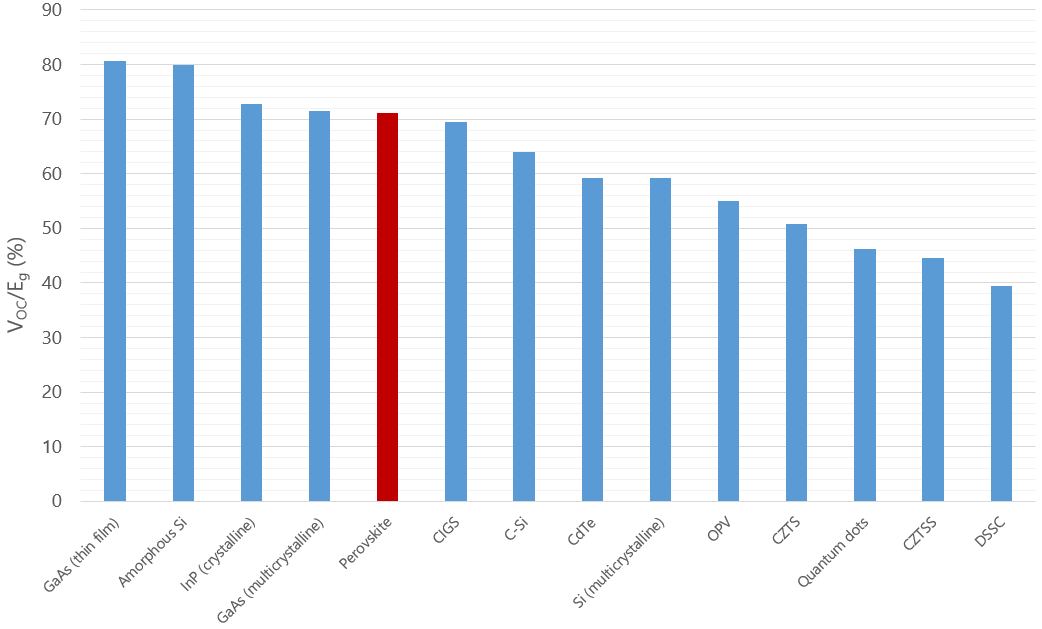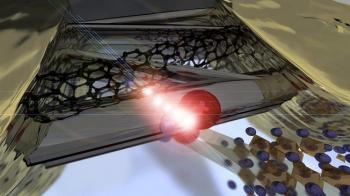Why are Perovskite Solar Cells So Significant?

There are two key graphs which demonstrate why perovskite solar cells have attracted such prominent attention in the short time since 2012. The first of these graphs (which uses data taken from the NREL solar cell efficiency chart)1 demonstrates the power conversion efficiencies of the perovskite-based devices over recent years, in comparison to emergent photovoltaic research technology, and also traditional thin-film photovoltaics.
The graph shows a meteoric rise compared to most other technologies over a relatively short period of time. Within 4 years of their breakthrough, perovskite solar cells had equalled efficiencies of Cadmium Telluride (CdTe), which has been around for over 40 year. Furthermore, as of June 2018 they have now exceeded all other thin-film, non-concentrator technologies – including CdTe and Copper Indium Gallium Selenide (CIGS). Although it could be argued that more resources and better infrastructure for solar cell research have been available in the last few years, the dramatic rise in perovskite solar cell efficiency is still incredibly significant and impressive.

The second key graph below is the open-circuit voltage compared to the band gap for a range of technologies that compete against perovskites. This graph demonstrates how much of a photon’s energy is lost in the conversion process from light to electricity. For standard excitonic-based, organic-based solar cells, this loss can be as high as 50% of the absorbed energy, whereas perovskite solar cells regularly exceed 70% photon energy utilisation, and have the potential to be increased even further.4
This is approaching the values of state-of-the-art technologies (such as GaAs), but at a significantly lower cost. Crystalline silicon solar cells, arguably the closest comparator to perovskites in terms of efficiency and cost, are already up to 1000 times cheaper than state-of-the-art GaAs.5 Perovskites have the potential to become even cheaper than this.


